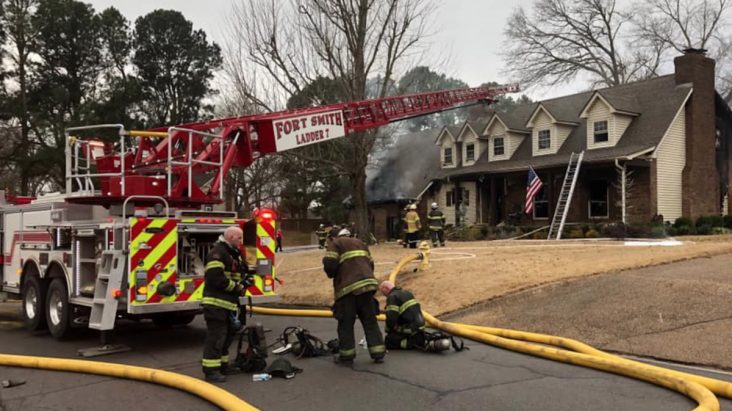Fort Smith Fire Chief says city should maintain ISO 1 rating in 2021
by June 24, 2020 4:15 pm 1,895 views

Fort Smith achieved an Insurance Service Office (ISO) rating of Class 1, the most elite classification in the country, at the end of 2016, and everything is on track to keep that rating.
The classification is determined on where fire stations are located, response times and the type of the events to which the department responds, Fire Chief Phil Christensen told the Fort Smith Board of Directors during his annual fire department report Tuesday (June 23).
“We were moved up to ISO 1 in 2017. We will be up for review next year. In every measurable standard that ISO uses, we are maintaining at 90% or better, meaning we will still be at ISO 1 at this time next year,” Christensen said. “I keep a very close eye on that. We do not want to lose it. It is a tremendous asset for the city itself.”
The ISO provides statistical information on risk. ISO ratings are calculated on a scale of 10 to 1 with 1 representing the lowest risk. The rating translates to lower insurance rates for Fort Smith residents, said Fort Smith Mayor George McGill.
“The difference between ISO rating 1 and 5 could mean $300 to $400 per year to a citizen. It is very important that we have the best rating that a fire department can earn,” McGill said.
FSFD responded to 335 fires in 2019, down from 375 in 2019. Of those, 163 were building fires; 58 were vehicle fires; and 115 were listed as other fires. This compares to 196 building, 58 vehicle and 121 other fires in 2018. Total calls in 2019 were 11,873, up 4.7% from 11,337 in 2018. EMS calls had the biggest jump, rising 6.7% from 7,842 in 2018 to 8,369 in 2019.
“We increase on the average of about 3-5% annually across the board all run types. 2019 was no different. We actually reduced our structure fire calls, but our EMS calls went extraordinarily. But overall, our call volume was right on pace with where they should be,” Christensen said.
Something unique in 2019 was the amount of structure fires versus the amount of structure fire damage, Christensen said. In 2019, the department responded to over $290.5 million worth of property with fire loss at 1.07%.
“Our goal is to maintain fire loss overall at 10% or less. (This) is very good. That is another reason we are ISO Class 1,” he said. “One way to look at it is for a $15 million investment — that is my budget, you are saving $290 million. That’s a pretty good rate of return right there.”
Another factor in determining ISO rating is response time. FSFD average response time in 2019 was 3 minutes and 37 seconds to any part of the city.
“That is another one of those numbers I watch daily if not weekly, especially to the far east, the far south and far southeast side of the city to make sure we’re responding to those citizens in a timely manner. If we start seeing an increase in responses or response time, I will stand before you and ask for another station. Until then, the need is just not there,” Christensen said.
The FSFD is budgeted for 149 uniformed employees. The department is nine short with 140 uniformed personnel, Christensen said. In 2019, the department reorganized the 12th Company, the vacation crew that does not have a home at a particular fire station. In the past, that company included a captain, a driver and two firefighters for all three shifts in that company. After seeing that the department would be short-handed in certain areas that company was reorganized to add a second driver to each shift, which allows for more to be trained as captains, Christensen said.
“We weren’t going to have enough young leaders for the future. … So we made this switch last year. Not only was it great for succession plans for the fire department, it actually reduced overtime throughout the year,” Christensen said.
Along with highlighting the achievements, Christensen reported that the area where the department was lacking in 2019 was citizen outreach. Numbers last year were almost half of where they typically are, he said.
“I attribute that partially because of the (record flooding of the Arkansas River in May 2019). We were very busy with that for an entire month, but that is just an excuse,” Christensen said.
The biggest factor affecting citizen outreach was the FSFD fire safety house, which was decommissioned in 2019 because it had become too unsafe to tow around town and use for outreach, he said. The house was sold at auction. The department has since applied for grants in hopes of replacing the safety house, he said.
